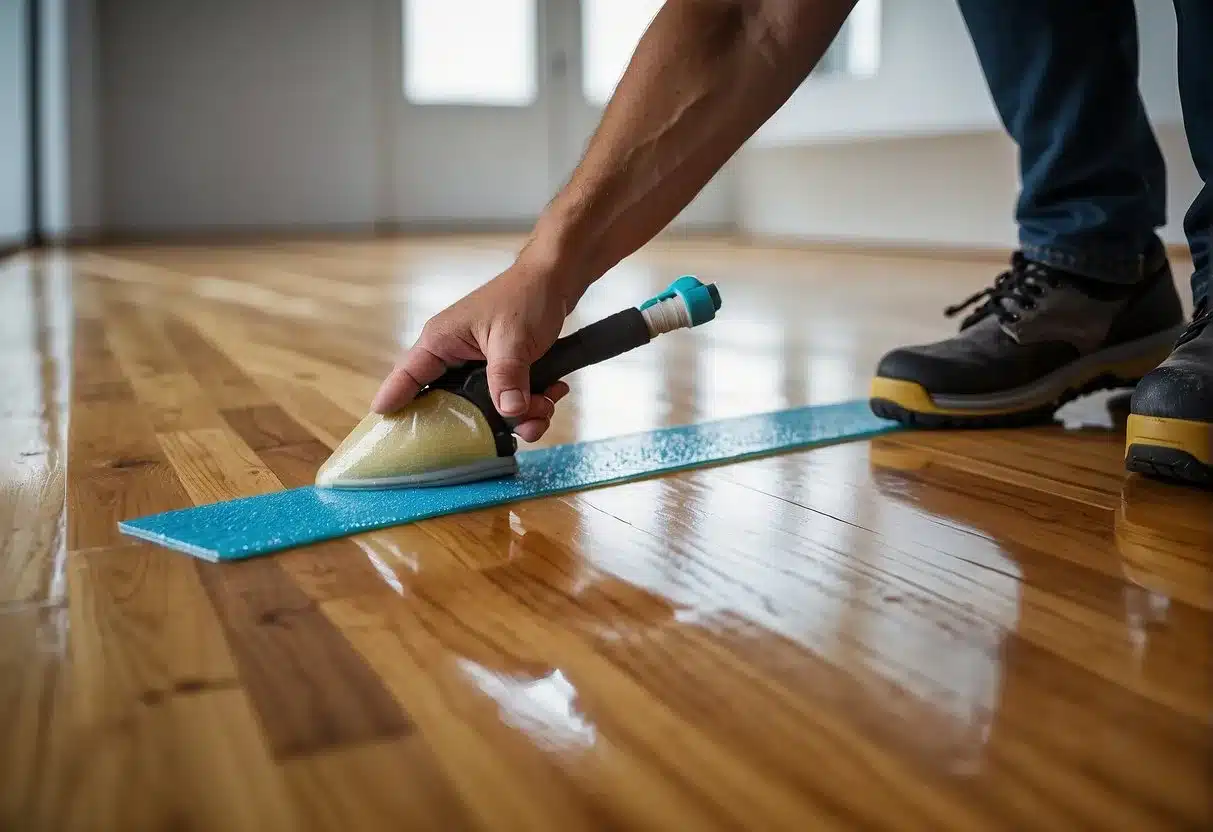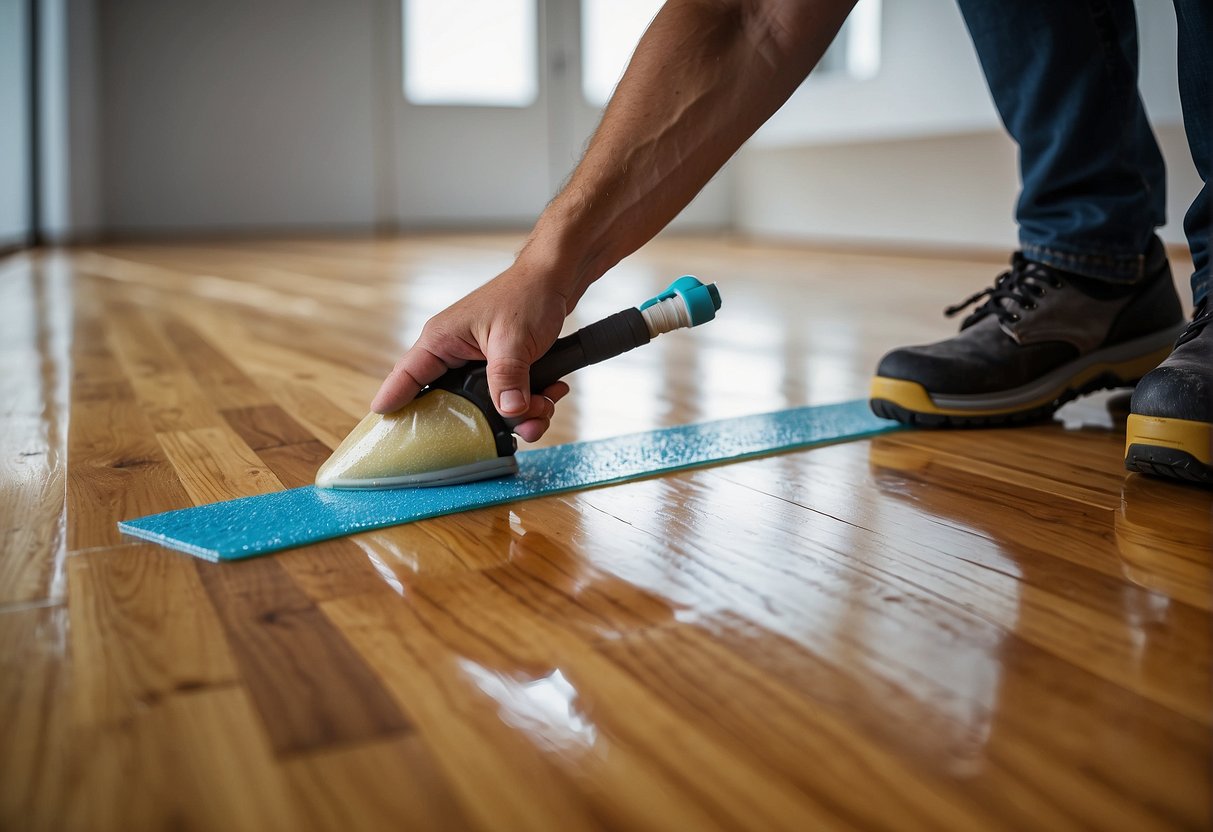Understanding Hardwood Floor Durability
Hardwood floors are a coveted choice for their natural beauty and time-tested appeal. When selecting hardwood flooring, understanding the durability of different wood species is crucial. Durability affects not just longevity but also how the floor reacts to daily wear and tear, including the likelihood of scratches over time.
Oak, maple, and hickory are hardwoods renowned for their toughness. These species are less prone to damage from regular foot traffic, making them suitable for busy households. Walnut, while also durable, is slightly softer than oak and hickory, implying that it might be more susceptible to scratching.
Ipe, also known as Brazilian walnut, stands out for its extreme hardness. This makes it an excellent choice for areas that see a high level of activity.
Conversely, woods like maple and oak offer a good balance between durability and ease of repair. Scratches may be noticeable, but these woods can often be refinished to restore their original luster.
The Janka Hardness Scale is a common measure of wood’s resistance to wear and denting. Woods with higher Janka ratings are generally more durable, with red oak having a rating around 1290, and maple around 1450. Janka Scale scores are used to grade the durability of hardwood flooring and guide consumers in their decision-making.
| Wood Species | Janka Rating |
|---|---|
| Ipe | Over 3500 |
| Hickory | Around 1820 |
| Maple | Around 1450 |
| Oak | Around 1290 |
| Walnut | Around 1010 |
The proper selection of hardwood will have a significant impact on the floor’s ability to resist scratches, with certain finishes offering additional protection. Satin and matte finishes might show scratches less than a high-gloss finish, but each wood species has inherent qualities that contribute to its overall durability.
Causes of Scratches and Wear
Hardwood floors are prone to scratches and wear due to various factors ranging from daily activities to environmental conditions. This section outlines the specific causes and their effects on flooring.
Common Scratch Sources
Objects with hard edges, such as heels and furniture legs, can mark the surface of hardwood floors. Frequent contact with such items is one of the primary reasons floors sustain scratches.
Effects of High Traffic on Flooring
In high-traffic areas, the constant tread of shoes and boots can gradually wear down the finish on hardwood and leave behind visible trails of use.
Damage from Furniture and Movements
Dragging items like chairs or heavy furniture across hardwood flooring can result in deep gouges or a series of scratches, significantly detracting from the wood’s appearance.
Impact of Small Debris and Dirt
Fine dirt and debris can act like sandpaper underfoot, scratching the hardwood as people walk across the floor. Regular sweeping and vacuuming are crucial in maintaining the floor’s integrity.
Potential for Water and Liquid Damage
Exposure to water and other liquids can cause hardwood floors to warp, discolor, or become more susceptible to scratches due to softened wood or a compromised finish.
Influence of Pets and Their Nails
The nails of household pets routinely contribute to scratches, especially when pets are energetic or play actively on hardwood surfaces. Keeping pet nails trimmed can help reduce the likelihood of damage.
Preventive Measures to Protect Floors
Properly safeguarding hardwood floors is critical to maintaining their beauty and longevity. This can be achieved through a combination of strategic use of rugs and pads, sensible footwear and furniture strategies, diligent cleaning routines, and thorough initial finishing.
Choosing the Right Rugs and Pads
Area rugs and protective pads are essential in preventing scratches on hardwood floors. Placing area rugs in high-traffic zones can significantly reduce wear and tear. Underneath these rugs, felt pads promote further cushioning, reducing the risk of damage from below.
Proper Footwear and Furniture Practices
Footwear with hard or sharp soles can cause significant scratching. Implementing a no-shoe policy indoors is a simple yet effective measure to protect your floors. Similarly, attaching furniture pads to the legs of chairs, tables, and sofas can help prevent scratches when these items are moved.
Regular Cleaning and Maintenance
To prevent abrasive particles from scratching your floor, a regular cleaning regimen is important. Sweeping, using a soft mop, or a vacuum designed for hardwood can keep your floors immaculate and scratch-free. Immediate attention to spills and tracked-in dirt will keep your floors looking their best.
Initial Floor Finishing and Sealing
Applying a strong finish like polyurethane or urethane during the initial installation or refinishing of hardwood floors creates a protective coating. This coating acts as a barrier against everyday wear and potential damage, contributing significantly to preventing scratches.
Damage Prevention Tips
- Use protective measures such as rugs and felt pads under all mobile furniture.
- Ensure all furniture is lifted rather than dragged to shift positions.
- Keep pet nails trimmed to avoid scratches.
- Refrain from using abrasive cleaners that can damage the floor’s protective seal.
Cleaning Techniques for Hardwood Floors
Proper cleaning techniques can ensure that hardwood floors remain beautiful and scratch-free. This section covers the essentials for keeping floors in top condition.
Daily Maintenance for Dust and Debris
Daily sweeping with a soft-bristled broom or using a dust mop is the first defense against scratches. It removes particles that can dull the floor’s finish. Those who prefer modern tools can opt for a vacuum cleaner designed for hardwood floors, which delicately picks up dust without harming the surface.
Deep Cleaning Methods
For a more thorough clean, one should periodically employ deep cleaning techniques. A mop dampened with a solution of water and a mild detergent can be used. However, for an eco-friendly alternative, mixing olive oil and vinegar in warm water could both clean and add shine to the floors without using harsh chemicals.
Addressing Spills and Stains Promptly
Spills should be wiped up immediately with a soft, dry cloth to prevent staining. For tougher stains, applying a small amount of vinegar directly and gently rubbing can lift the stain without damaging the wood. It’s crucial to avoid over-wetting the floor or allowing water to stand, which can cause warping.
Use of Natural Cleaning Agents
Natural cleaning agents like olive oil and coconut oil can be used to buff and shine hardwood floors, giving them a protective layer that also repels dust. For those looking for a simple solution, just a drop of olive oil in warm water can make the floors gleam while keeping them nourished.
Repairing Scratches in Hardwood Floors
Hardwood floors are cherished for their classic beauty and enduring quality, but scratches are an inevitable part of their lifecycle. Whether it’s a minor blemish or a deep gouge, there are techniques available to make your hardwood floor look almost as good as new.
Dealing with Minor Scratches
Minor scratches that only affect the finish can often be repaired with ease. A walnut can be an effective natural solution, as the natural oils can help to conceal the scratch. For more consistent results, a marker specifically designed for wood or blending pencils that match the floor’s color can be used. For superficial scratches, fine-grained sandpaper can gently buff away the blemish, followed by the application of a new coat of finish.
Fixing Deep Scratches and Gouges
Deeper scratches and gouges require a more intensive repair process. First, the affected area can be cleaned, then wood filler that matches the floor’s color should be applied to fill the gouge. After the filler has dried, sanding it down level with the floor’s surface prepares the area for a new coat of finish. This restores the protective layer and blends the repair into the surrounding area.
Refinishing Techniques
When scratches are widespread, refinishing may be the most effective way to restore the floor’s appearance. This process involves sanding down the entire floor to remove the old finish, along with any scratches. The floor is then stained, if desired, and a new coat of finish is applied. Minwax Hardwood Floor Reviver is a product that can refresh the floor without the need for sanding.
DIY Solutions for Cosmetic Flaws
For homeowners looking to address cosmetic flaws on their own, DIY solutions can save time and money. Mixing olive oil and baking soda to create a paste can minimize the appearance of scratches. Additionally, wax sticks, available in various colors to match your floor, can fill in and hide blemishes. Always test these solutions in an inconspicuous spot before full application to ensure color compatibility.
Improving the Floor Finish
When considering the longevity and appearance of hardwood floors, the finish plays a pivotal role. To enhance the durability and scratch resistance of hardwood floors, a proper finish is crucial. There are several options for improving the floor finish that cater to different needs and flooring types.
Choosing the Right Finish
Selecting the appropriate finish is essential for protecting the wood grain and color. Water-based polyurethane provides a clear finish and resists yellowing. Its low toxicity is a boon for households looking for an eco-friendlier option. On the other hand, oil-based polyurethane adds a warm amber glow to the floor but comes with a stronger odor.
Application Techniques
For minor scratches, application of a new coat of finish may suffice. Begin by lightly sanding the area with fine-grit sandpaper to remove imperfections. After sanding, cleanse the floor with mineral spirits to ensure a clean surface for better adhesion of the new finish.
- Buffing and Recoating: A light buffing can prep an existing finish for an additional layer, offering renewed protection.
- Varnish or Shellac: These traditional finishes are often used for their aesthetic appeal, though they may lack the durability of polyurethanes.
- Wax: Applying wax can give a natural sheen to the floor while also providing a small layer of protection.
Maintenance Tips
Ongoing maintenance entails using proper cleaning agents that do not damage the finish. Avoid harsh chemicals and opt for pH-neutral cleaners designed for use with hardwood floors. Regular buffing can sustain the luster of the finish and might prevent the need for frequent refinishing.
When done properly, enhancing the floor finish will not only reduce the visibility of scratches but can also extend the life of the hardwood floor, making it resistant to everyday wear and tear. Remember, a well-maintained finish is the best defense against scratches in hardwood flooring.
Frequently Asked Questions
Before delving into specific concerns, it’s essential to understand that maintaining hardwood floors involves choosing the right material, applying a suitable finish, and adhering to best practices for care and prevention of scratches.
What types of hardwood flooring are most resistant to scratching?
Harder wood species like Hickory and Maple typically show more resilience against scratches. Products with higher Janka hardness ratings tend to withstand wear better.
How can I prevent my wood floors from getting scratched?
Utilizing entry mats and felt protectors under furniture can significantly reduce the risk of scratching your wood floors. Regular cleaning also removes debris that can lead to scratches.
Which finish can help make my hardwood floors more scratch-resistant?
A polyurethane coating is known for creating a hard protective layer that can help floors resist scratches and scuffs.
Are there specific wood flooring options that are safe for homes with pets?
Floors with stronger graining patterns or textured surfaces like hand-scraped or distressed hardwood can better hide scratches and are more forgiving with pet claws.
What are the best practices for maintaining hardwood floors to minimize scratching?
Regular sweeping, immediate spill clean-up, and periodic use of a wood cleaning product are recommended to maintain the surface and minimize the potential for scratching.
Can you recommend durable flooring alternatives that have the appearance of wood but higher scratch resistance?
Laminate and luxury vinyl tile (LVT) are engineered flooring options that replicate wood aesthetics while offering enhanced scratch resistance and durability.


